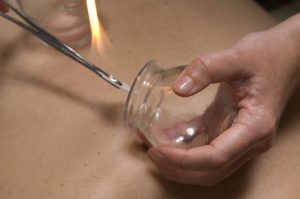Migraine is the most common neurological condition, affecting nearly 25% of women and 14% of men and can start as early as childhood. In most cases, migraines tend to be one-sided with pulsating pain that can last anywhere from a few hours to a few days, leaving sufferers often literally bedridden with nausea, vomiting and extreme sensitivity to light and sound.
What causes migraines?
Exactly what causes migraines is not clear, although these factors have been identified as migraine triggers in some people:
– emotional stress such as anger, worry, tension or even excitement
– physical stress such as over-exertion, tension in the neck and shoulders or even simply a change in sleep pattern or routine (even going on holiday ironically enough!)
– foods such as caffeine, chocolate, citrus fruits, cheese, certain food additives such as MSG (frequent in processed food or Chinese food), alcohol (especially red wine), dehydration, drop in blood sugar (from infrequent meals or excessive dieting), food allergies
– hormonal changes (in women) especially during the pre-menstrual period of the cycle, or during times of changes such as puberty, menopause, pregnancy or induced by medication (HRT or the pill)
– eye strain from bright or flickering light, exposure to loud noise or intense smells or simply a stuffy atmosphere
– other triggers like sleeping tablets, toothache, high blood pressure
Typically migraines are caused by multiple triggers, making it often very difficult for sufferers to manage them as eliminating one cause is often not sufficient.
How to manage migraines?
Apart from staying away from any trigger to your migraines (foods, noise, stress), there is medication available although it often comes with potential side effects or unadvisable if taken too often. If you want to limit your use of medication or want to limit its side effects there are a number of complementary therapies that can help you manage better your migraines and rely less on popping pills.
Acupuncture and Chinese Medicine
Acupuncture can offer powerful relief without the side effects that prescription and over-the-counter drugs can cause. Chinese Medicine (acupuncture and Chinese herbal medicine) have long been used to relieve headaches and migraines, as well as their underlying causes. It is also now a widely accepted form of treatment for headaches in our society as more and more studies around the globe suggest that acupuncture is an effective treatment for migraines and headaches. In a study, published in the British MedicalJournal , it was found that acupuncture resulted in the resolution or reduction in the frequency and severity of cluster headaches, and a decrease or discontinuation of medications.
Treatment aims to treat the specific symptoms but also the underlying cause of the problem, and is unique to each individual using a variety of techniques such as acupuncture, Chinese herbs, massage and exercises (such as Qigong) to restore imbalances found in the body.
Self-help acupressure
You can massage the acupressure points, Gallbladder 20, which are located on each side of the back of the neck, two inches out from the middle, just underneath the base of the skull. Massaging this point can relieve migraine and tension headache pain.
Aromatherapy
Some essential oils have traditionally been used to treat migraines, among them lavender, chamomille, true melissa and rosemary. Lavender is usually the easiest to find and can be used by putting 5 to 10 drops of lavender or peppermint essential oil in a cup of warm water. You can then soak a wash cloth in the warm water and apply it to the head or the nape of the neck. If you prefer an aromatherapy massage (or self-massage), add a few drops of lavender to almond oil and massage it into the head at the back of the neck, the temples, and the forehead.
Deep breathing and relaxation
Because stress and general tension are likely to play a role in your migraines, deep breathing and relaxation techniques can be a great preventative measure. Learning how to breathe deeply (abdominal breathing) is an important and all too uncommon skill that should be acquired by everyone. In our fast paced societies, most of us breathe in a very shallow manner, often leading to tension in the chest and shoulders and that tension can easily travel to the neck and head. You can combine the practice of deep breathing with a form of physical exercise such as yoga or tai chi or simply practice the breathing on its own. For a description of abdominal breathing read our next post.
Preventative care
Natural migraine remedies work much more effectively when used preventatively. Stopping a migraine before it starts is better than trying to treat the migraine once the pain has set in. The best way to deal with migraines is to adopt a healthier lifestyle by eating mostly raw fresh fruits and vegetables (more of the latter), avoiding processed foods at all costs, and eliminating as many toxins as possible.




